After that amazing human experience on the Bolaven Plateau, we still have one week left to spend in Laos. We are going to kill that time hiking from Pakse to the 4000 islands, in the very south of the country. Let’s go for 170 kilometres of sand path along the Mekong river!
Vat Phou
Before to reach the track, we have first to endure a quite boring walking day under the sun on a uninteresting road… Sounds like fun, doesn’t it? Fortunately, this road is leading directly to Wat Phou, a pre-angkorian temple of incredible cultural and historical value. Indeed, in the 6th century, it was the capital of the entire Khmer kingdom!
If you can still find traces of this ancient time on site, all the building still standing are from the 10th century. Still, it’s a real time travel! This place is quite touristic of course, and the entrance price is quite high for Laos, but it is well worth a visit, don’t you think?
Rural life along the Mekong river
Next thing, we are finally on the path! We will follow it for 4 days, on the right side of the river. Four overwhelming days watching rural Laotian life and the people who live there slowly drift by at the pace of our walk.
The first evening, we ask permission to sleep in a small colourful temple along the river. The senile sweet old monk who lives there still speaks a few words of French and agrees immediately to offer us shelter. Perfect! Or so we thought, but unfortunately we are still not quite far enough from Wat Phou and all the tourist resorts… The night has already settled down on the temple when a police officer suddenly appears to tell us we are not allowed here and that we have to go back and find ourselves a hotel… Oops! We obediently start our way back on the track… But as soon as the officer is not in sight anymore, we turn around and, taking advantage of the darkness, run in the other direction! We are now wandering freely in the dry summer night, half-lost, not knowing where we are going nor where we will be spending the night. And we kind of like that feeling, weirdly. It feels nice to walk quietly in the dark, without goal, enjoying the stars, the fresher air and the smell of harvest, our footsteps softly cushioned by the fine copper sand.
A few kilometres later, we arrive in front of a tiny crumbling wooden house lighten by a single dim yellow lamp. A family of maybe ten is sitting under the cracked roof. They look startled as we emerge from the dark but, soon overcome by curiosity, they start asking us tons of questions that of course we can’t understand. Out of other ideas, we make the universal « sleep? » sign and put a silly smile on our faces and wait, expectantly, hoping they will not fetch the police. We actually have no idea if strangers are allowed to wander freely by night in this part of the country. But soon we are led to the centre of the village, where we meet a quiet man in his mid-forties -their leader, if we understood well. He points us to an old wooden stilt house on which are written in large white letters « village office ». We are apparently allowed to sleep there. The head of the village and his brother in law help us to make the place comfortable. Large rugs are spread on the inegal wood panels of the floor and big cushions are added to them. Slowly, all the shy kids of the village who were as usual observing us from a hidden place come to stay around us, flashing warm smiles, eyes glittering with curiosity. The head of the village, Mister Noun, doesn’t know a word of English and we know but a few lao words that we are not even sure how to pronounce. But we can see he is very intrigued and wants to talk to us. Minutes later a young boy (his son?) brings him a thick worn book. It appears to be an English exercise school book and going through it slowly together we manage to have a quite interesting conversation. We enjoy it quite a lot. We thought we would have to deal with the kind of » home-made fire water trap » we had to deal with in China but this charming Mr Noun seems to care more about exchanging ideas and points of view than getting dead-drunk. Laos will never stop to surprise us !
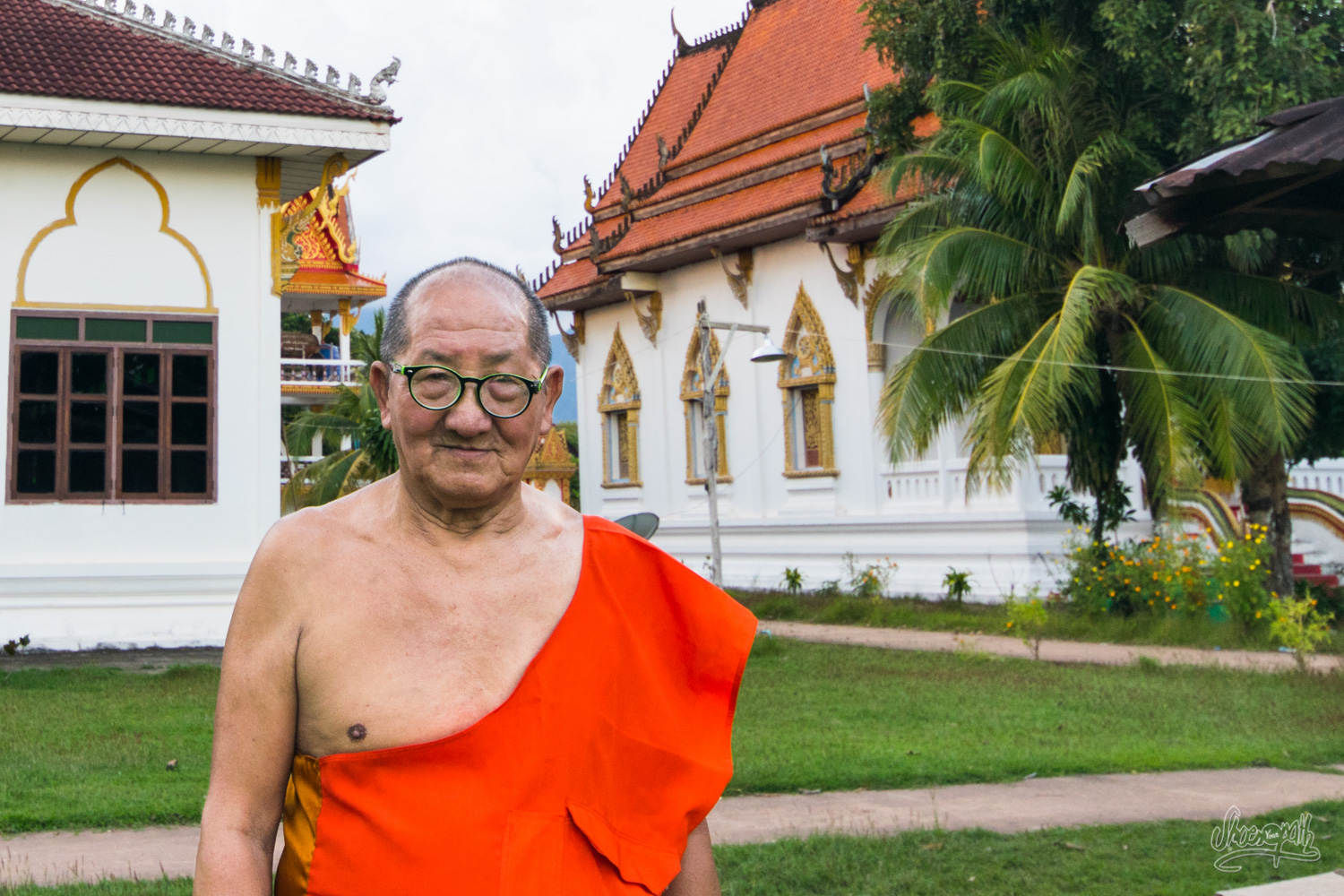
We leave at 5:30 the following morning. Everybody in the village is already buzzing around. We hope that leaving early we will escape from the devilishly hot sun. Moreover we soon discover than instead of following the main track, we can walk on a narrower path along the Mekong river, shaded by tall lush baboo trees. On our right hand, a string of colourful stilt houses; on our left hand a wonderful view over the river.
Idyllic! In the villages, mornings are dedicated to work. Men are out fishing or working in the fields while women cook, tend the houses, take care of the babies or create beautiful intricate bamboo baskets on their shaded terraces. In the afternoon, everybody is taking a lazy nap, comfortably laying in large hammocks hanging from the stilt houses. Everybody but the studious kids at school, who never miss to shout and wave at us by the open windows anytime we pass by. Once the bell rings the end of another learning day, all those adorable kids are allowed to wander freely and play around, and everyday many follow us for a few kilometres, holding our hands, happy, before going back home.
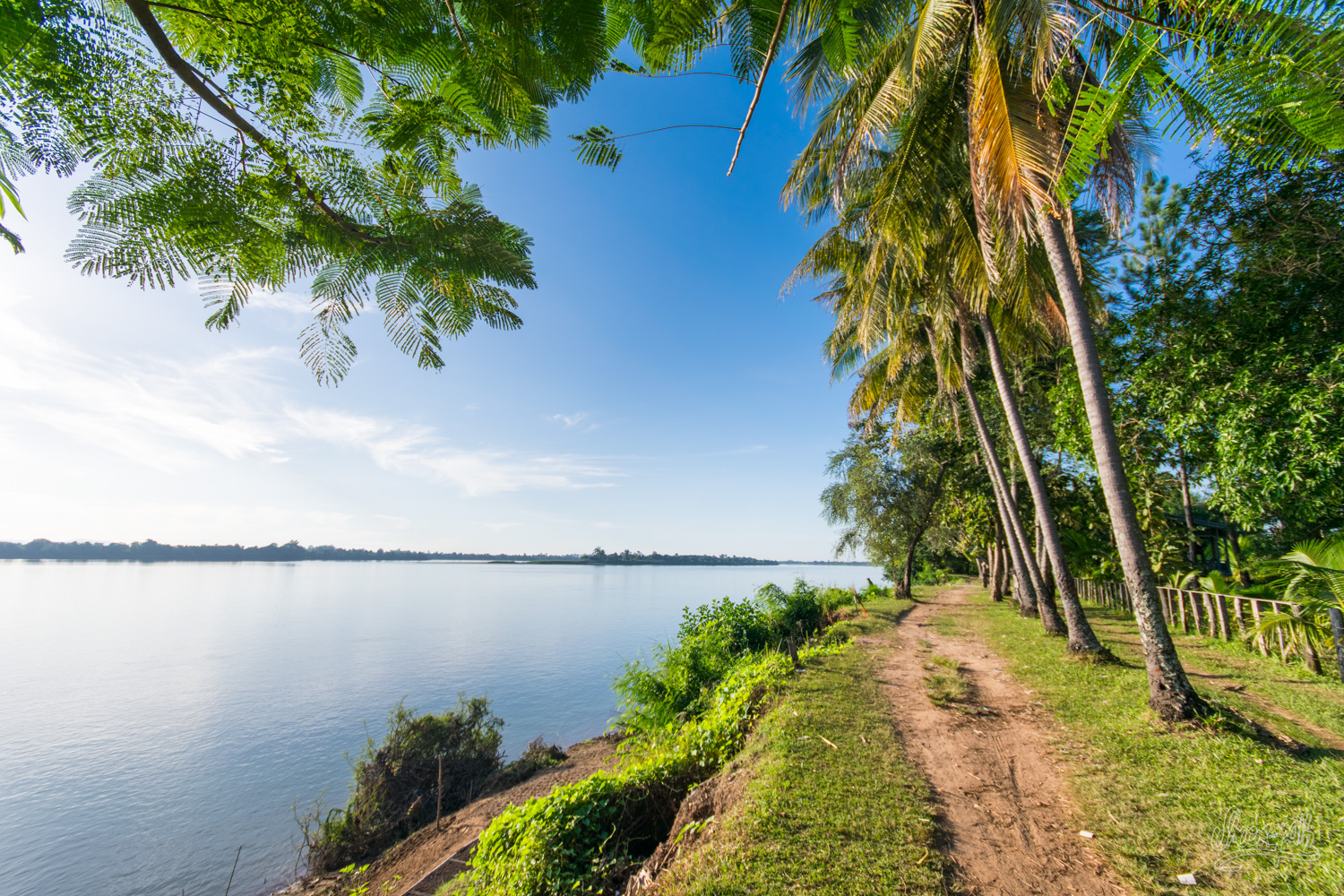
During those few amazing days, we are also very often invited for breakfast or lunch, to share dishes of fish, sticky rice and bananas. People here are amazingly welcoming! Every evening we find shelter in a temple (there is one in every village) where the generous monks always offer us water, tea or coffee and sometimes food. More than the very relaxing atmosphere we find in temples, we really appreciate sleeping there as the monks never miss to wake us up at 4 am with their loud prayers and drums. We can then enjoy to walk in the coolest hours of the day. Because at 9 o’clock, the world already turns to furnace!
Sometimes, around 2pm, when we can’t stand the heat anymore, we allow us to hitch for a few kilometers one of those pickup motocultors the farmers drive there. Once, one of the farmers, a « funny bugger » as our australian friends would put it, droves us around for five kilometres or so, yelling around as we passed through the villages something like « Strangers for sale! Cheap and fresh!! Come and see them! ». Everybody thought it was freaking hilarious, as you can imagine! They will probably talk about this for a few months…
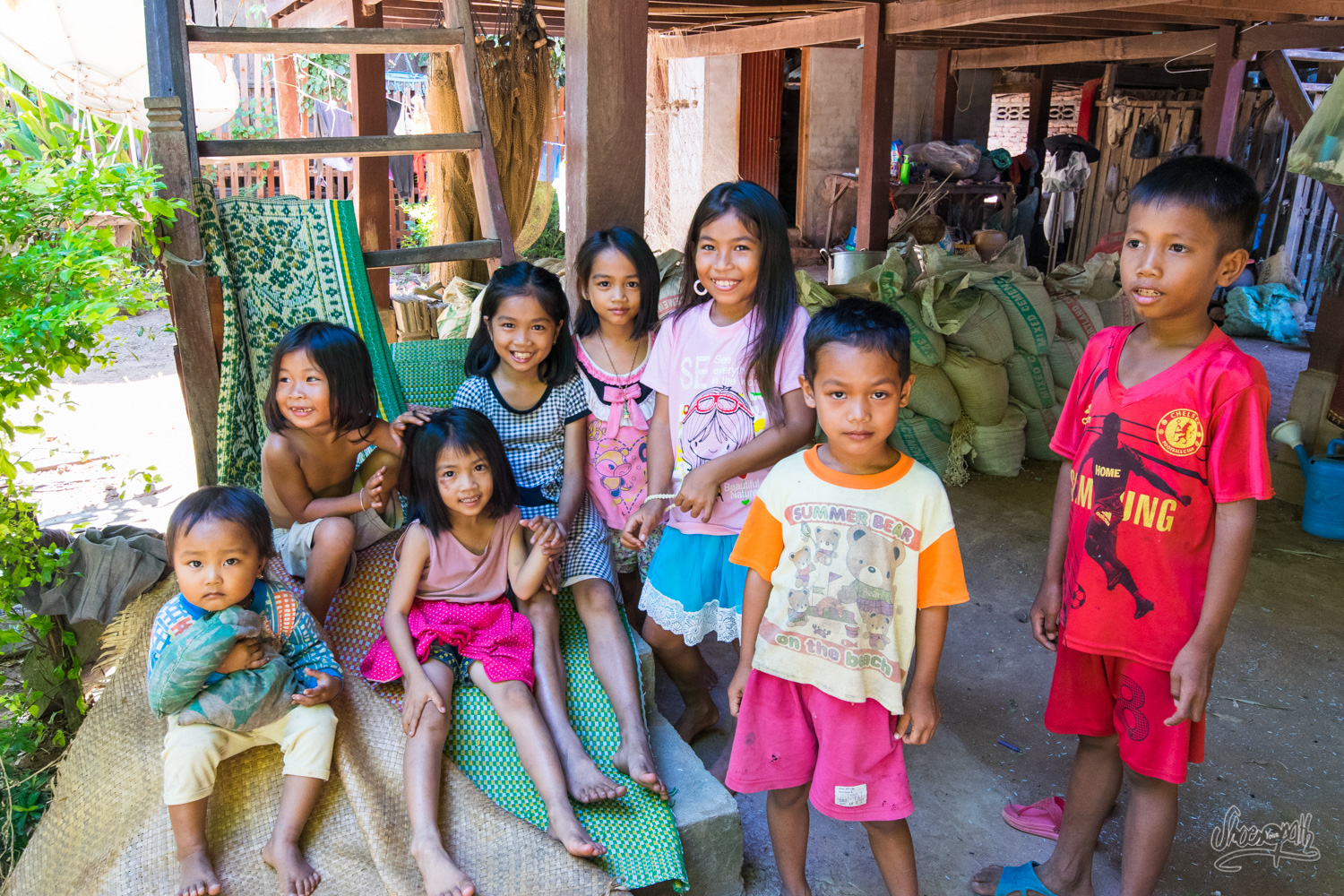
A different life
Here Time has a total different meaning than what we are used to in our busy everyday european life. It drifts by, slowly, peacefully and you barely even notice it. Those four walking days will pass like a beautiful vivid out-of-time dream one wishes never to forget.
One of these dreamlike days, we meet an amazing person. She is called Moon. She is a lean, beautiful young girl of 19, bright and full of life. Her long shiny black hair frames perfectly the tender oval of her sweet young face. She invites us for lunch at her parents’ house. She tells us, in a perfect english, that she is studying agronomy and agriculture economy in Pakse, but she very often comes back to her home town to give a hand to her lovely old mother and father.
– Especially during harvest time. This year has been particularly good, we have been able to gather large quantities of rice, she tells us.
– Oh great! Very good for business!
Business? What do you mean?
Well… If you’ve harvested more rice than usual then it means you will be able to sell more and therefore make more money I guess.
Hahaha you Europeans have such weird ideas. Always thinking about money! No, this rice is for us to eat. The extra quantity we got this year, well, we will store it in case something goes wrong next year. And of course we will give a bit to our neighbours too. »
So simple. Folks here may not have as much money as we do, but they are never in lack of anything, least of all happiness, simply because they cultivate everything they need and can count on each other and share goods. Moon makes us (re)discover a way of life we already had a glimpse of in China, but this time we really take time to ponder on it. There IS other ways to live than the consuming universe we grew up in. The more we travel, the more our « normal » occidental world appears weird and sick to us. There is no way we will be able to readapt to this strange nonsense alien world in which we don’t believe anymore. This at least, is clear. What to do then? And where to go?
The meal Moon prepares us is simple and delicious. We meet her mother, a lovely old lady still remembering a few words of French, and her sweet discreet father. We spend a long time together, sharing stories and dreams…
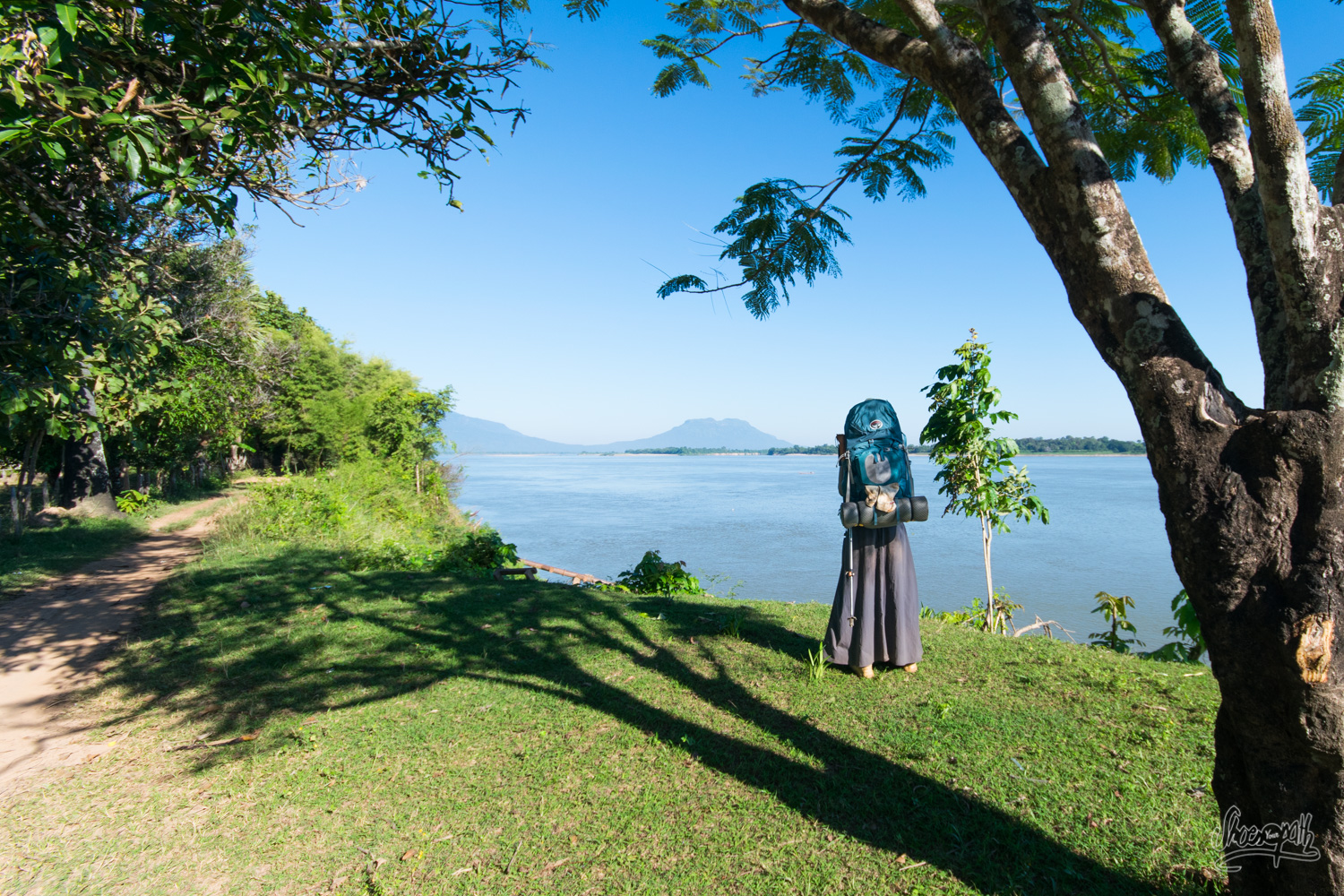
4000 islands
After this episode, we didn’t really want to throw ourselves back in the open jaw of mass tourism. At least, not yet. Trouble is, the south of Laos is renowned for two main islands, Don Det and Don Khone, both tourist paradises that seem difficult to avoid. But what about the other 3998 islands? What the point of having 4000 islands if we can visit only 2 ? We could find absolutely no information of any kind about them. Even our friend Google didn’t have a clue. How weird is that? Are these islands deserted? Unreachable? Not at all!
Here is a goal that we like : visiting the 4000 islands without setting foot on Don Det and Don Khon !
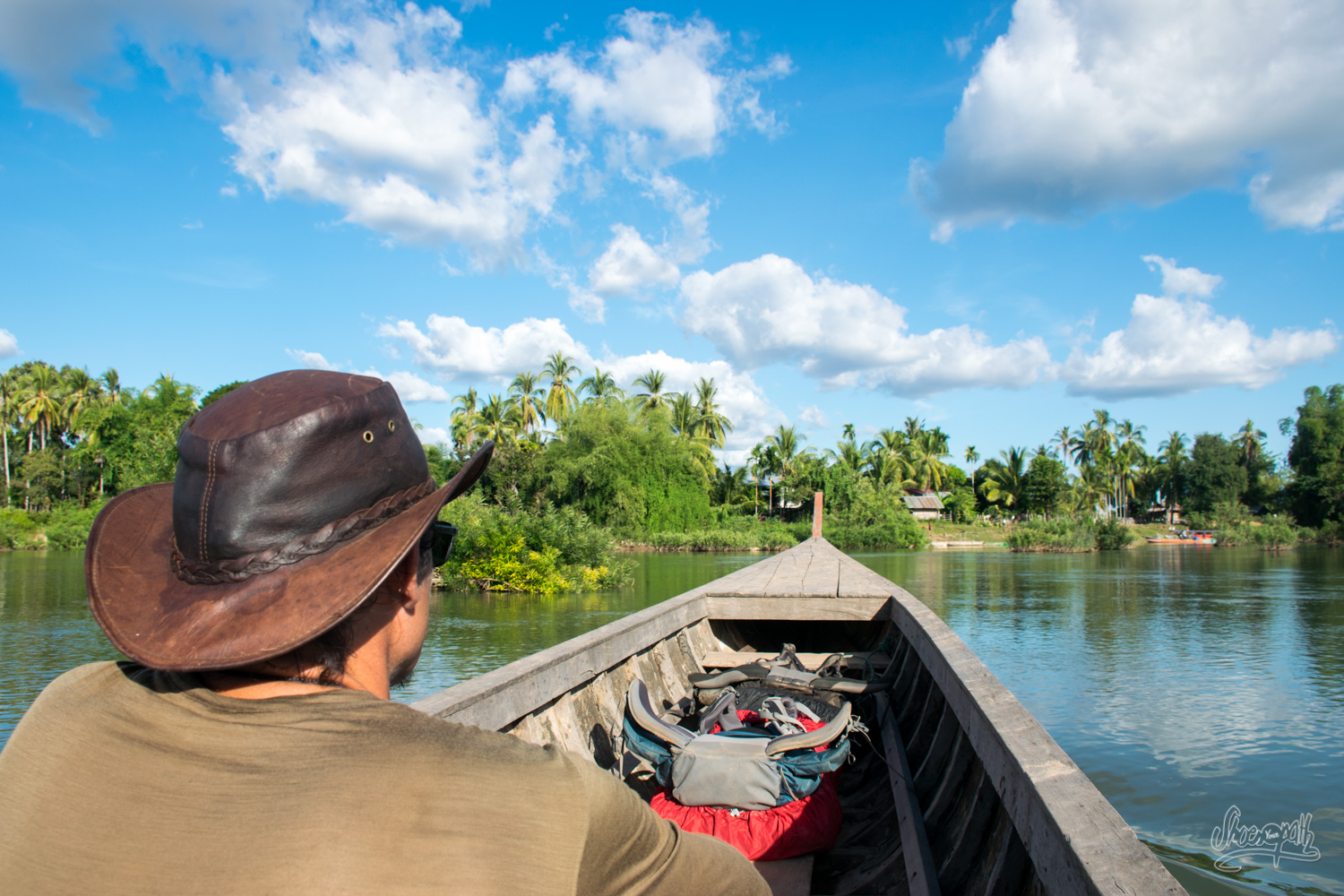
Spending time talking to locals, looming over maps and finally hiring fishermen’s boats, we’ve managed to set foot on two of those unknown islands which are probably two of the most exquisite natural jewels we ever visited. The scenery is even more beautiful than the right bank of the Mekong we just left. Hundreds of delicate butterflies navigate happily around bunches of bright flowers mingling with tall palm trees, the beautiful laos winter light playfully turning every particle of dust in the air into pure glittering gold and reflecting on the rushing Mekong. Fishing villages are set in this paradise and rice fields have been organised around them. Everything there is simple and beautiful. Dogs, cows, pigs and chicken are running everywhere. Once again, the highlights of these islands are the kids, who are the most adorable human beings you can imagine.
We are happy to witness the way they live here, knowing it will probably change in the following years. The rising pollution of the Mekong, the dams projects and increasing population reduce drastically the resources of the river, and it is harder and harder for fishermen to bring back home enough to support their family needs. What solutions will these people or the next generation imagine to save their future and their incredible douceur de vivre?
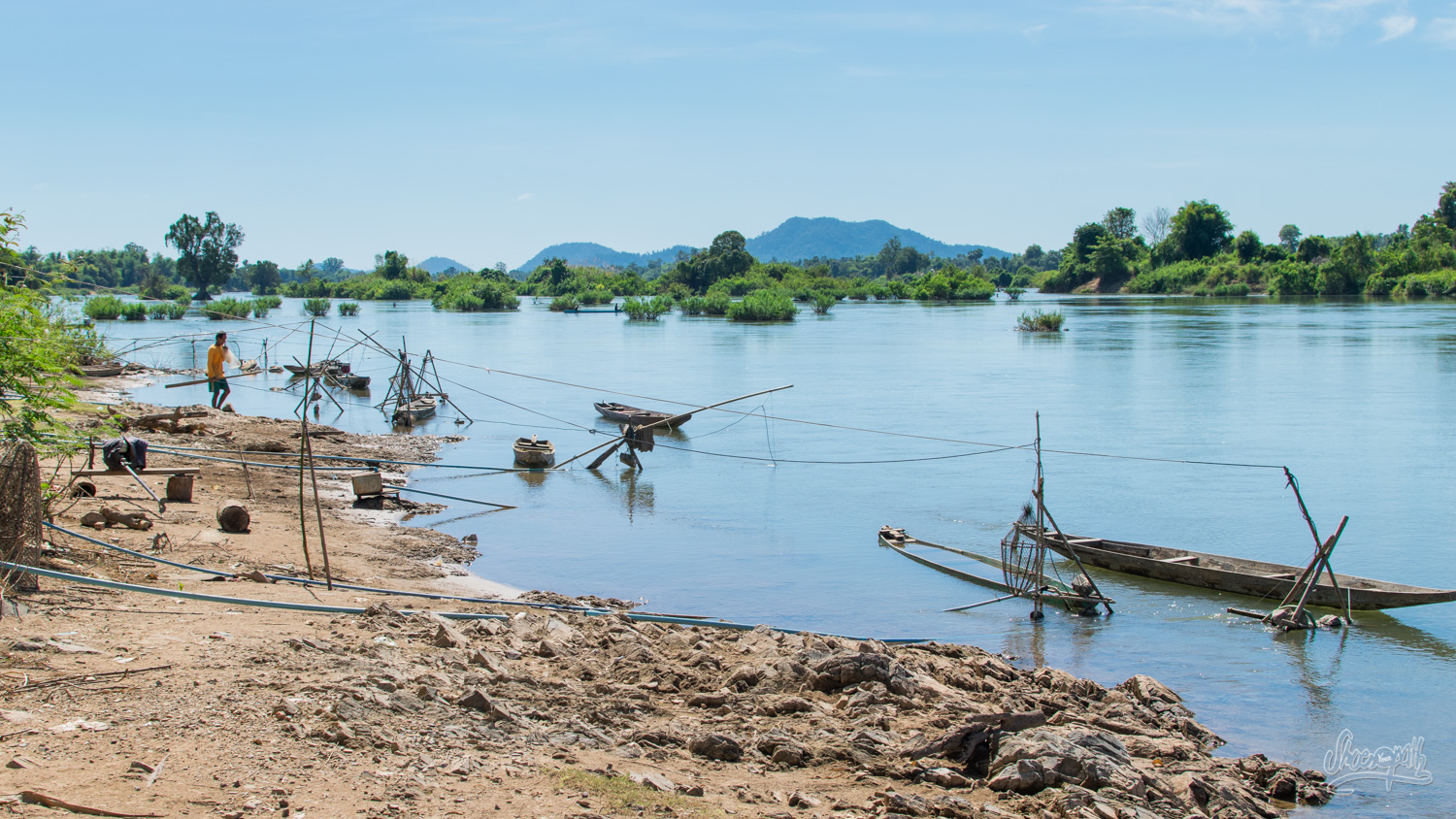
On the second island we visit, a lot smaller than the first one, we discover an other rare quality of the 4000 islands: in this area, the entire Mekong basically « jump a step ». Yep, just like that it decided it would be nice to fall from a few meters, like ten or so, creating massive waterfalls between the islands. The power of the rushing waters there is simply monstrous!
But the most impressive part is surely that people fish there, directly risking their lives in the very heart of the waterfalls, setting nets and deadly traps that the fish falling from the sky can’t escape. There is no mistake to be done when fishing there. One wrong step and you die. The Mekong here is violent and unmercifully. So, as we are exploring the remotest part of the second island, we stumble suddenly upon one of those impressive natural wonders and realise happily that the waterfall is crammed with all kind of different hand-made fishing traps. What a show it is to watch the setting sun playing with the watery mist emanating from the crashing fall. Simply superb!
We camp on site, hoping that tomorrow morning will bring a lot of men from the village and that we will be able to take a good look at their fishing skills. But with no monks to efficiently wake us up at 4am… Well, we simply don’t make it. We manage to get up at dawn, but it is already too late, the fishermen were too early for us and we only meet them on their way back from the river, heavy strings of fish hanging from their shoulders…
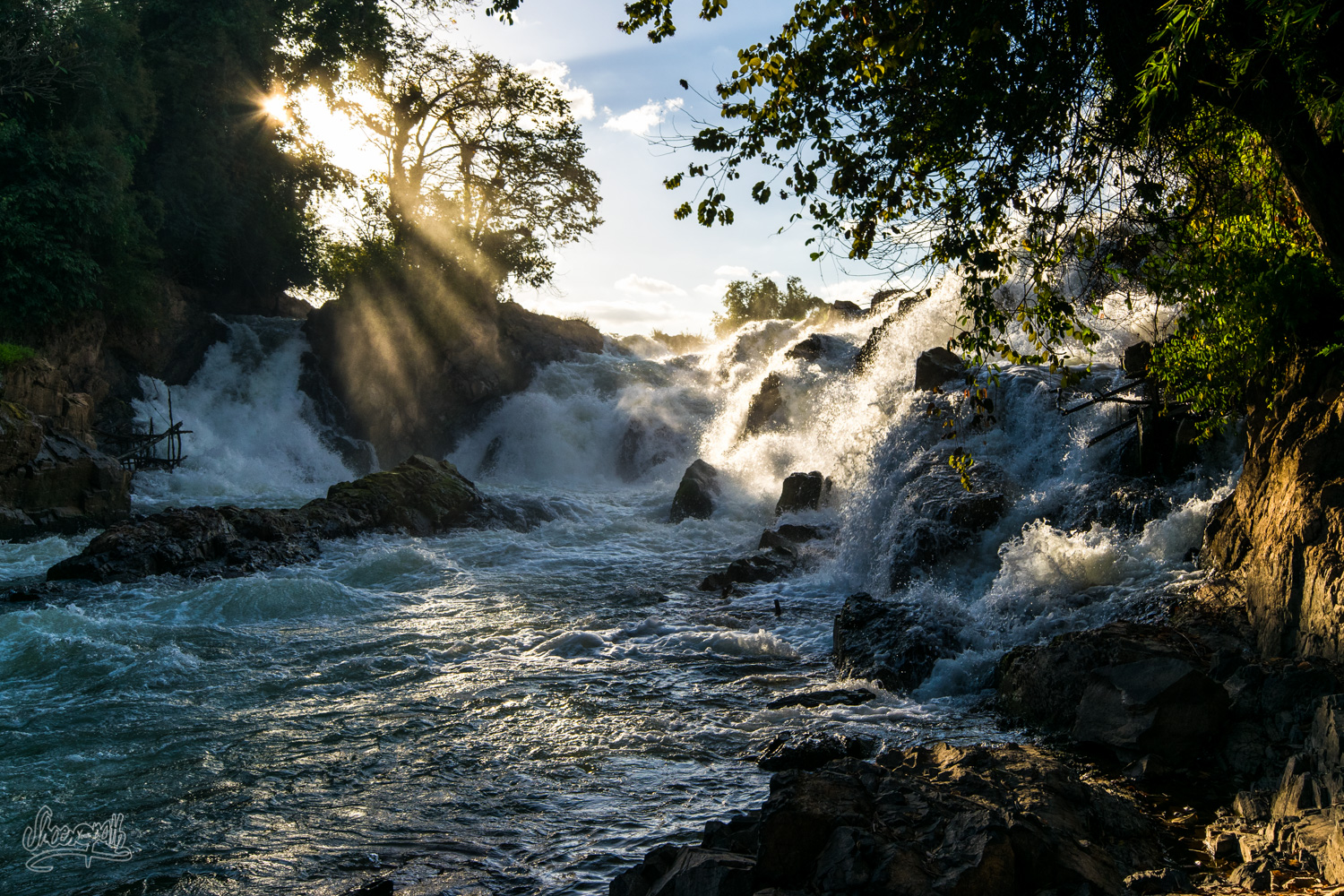
Khone Phapeng
Back to civilisation! It is a bit brutal. Thirty minute in a boat and we arrive in Nakasang, from where all the boats come and go to the islands. Hello rackety agitation, piles of garbage and hungover tourists !
Before to go back to Pakse by bus, then cross the border to Thailand, we indulge in one last small trip: we set off to Khone Phapeng, the biggest waterfall on the Mekong. The entrance price is over expensive and an electric minibus drops you strait at the foot of the falls… Not exactly the same atmosphere than on our lost island a few hours ago… But then, we thought, it is perfect for children or old people. Indeed it would be a shame to miss such a show. Because no doubt it is the most spectacular waterfall we’ve ever seen!
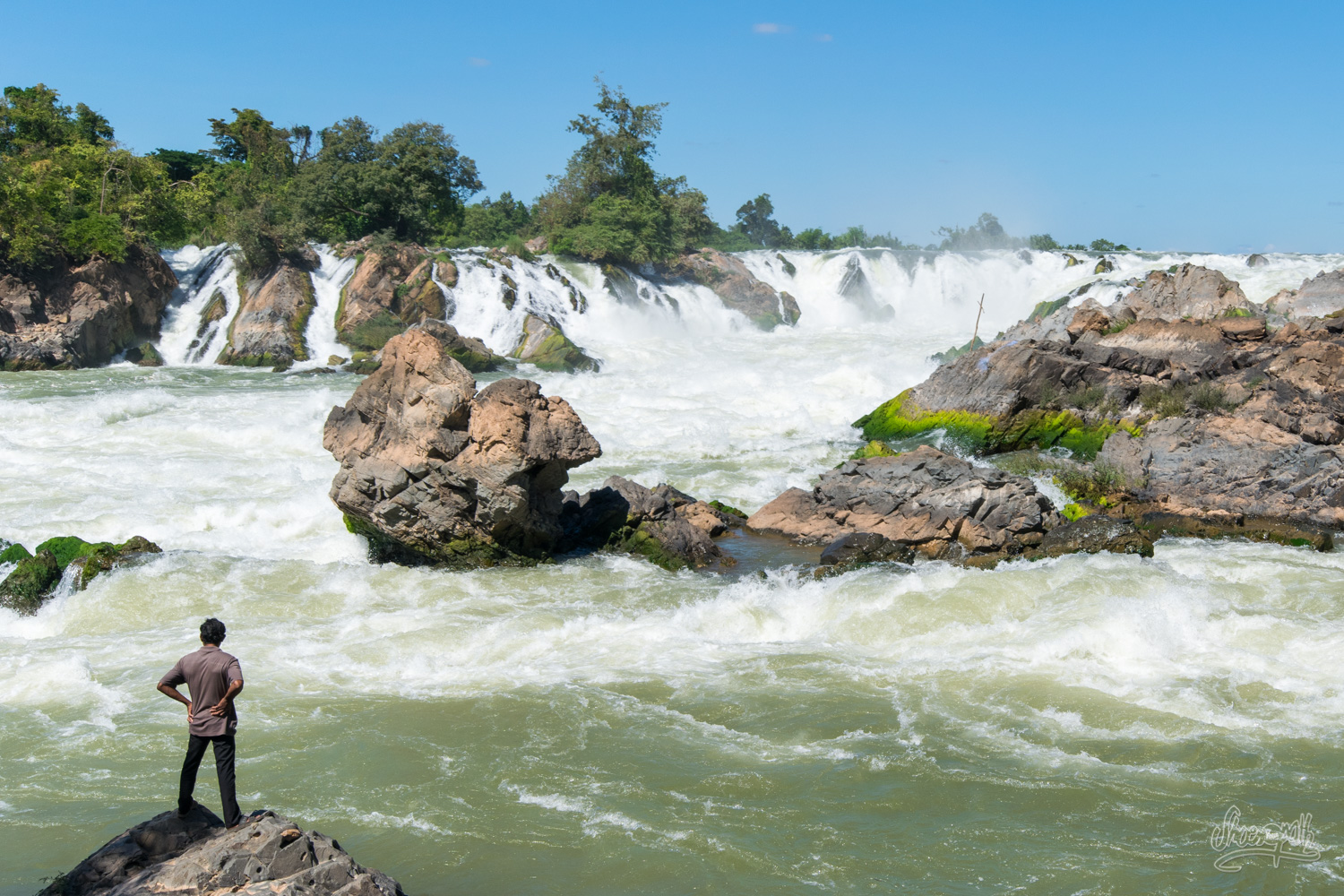
Bye bye dear Laos and amazing people! Thanks for all the smiles, warmth, languor and delicious sticky rice. Hope to see you again!
M. & Mme Shoes

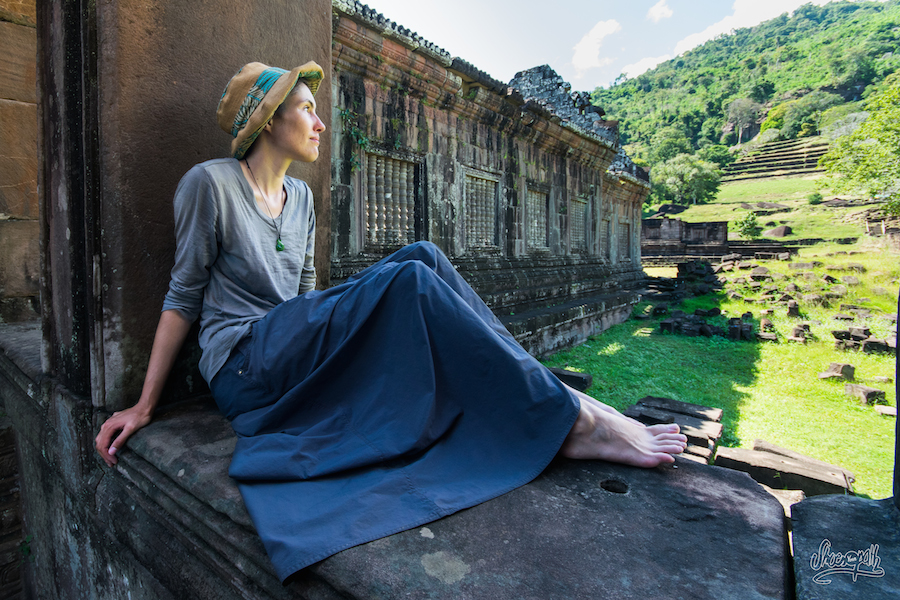
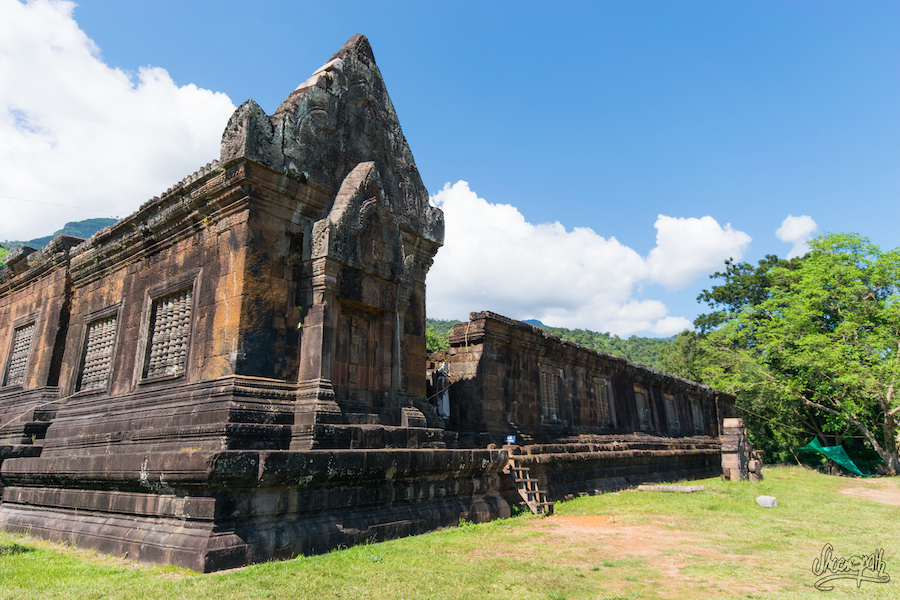
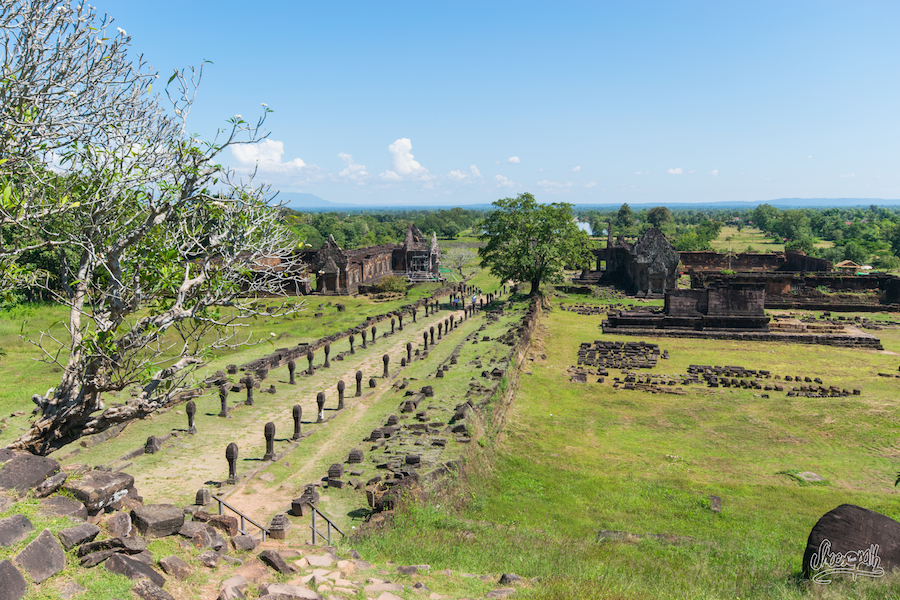
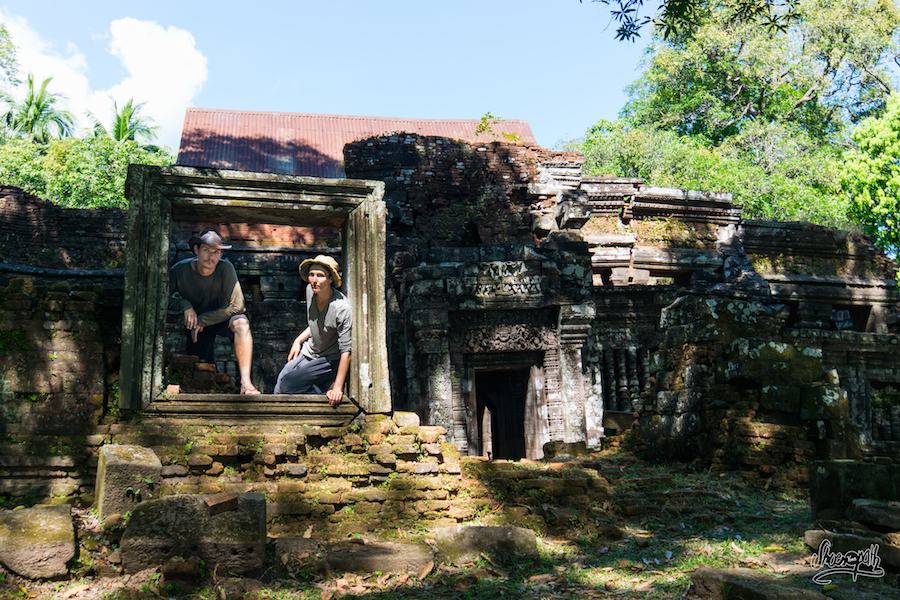
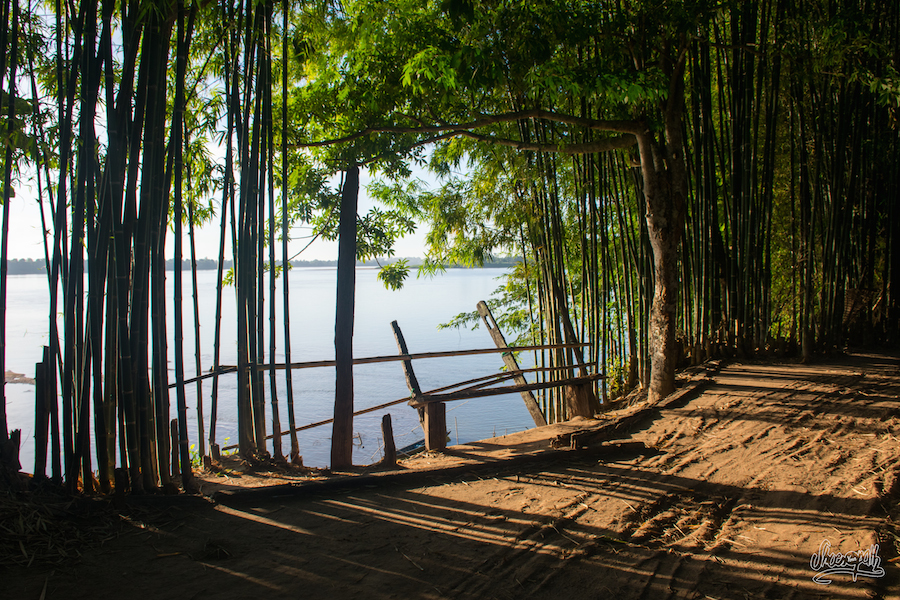
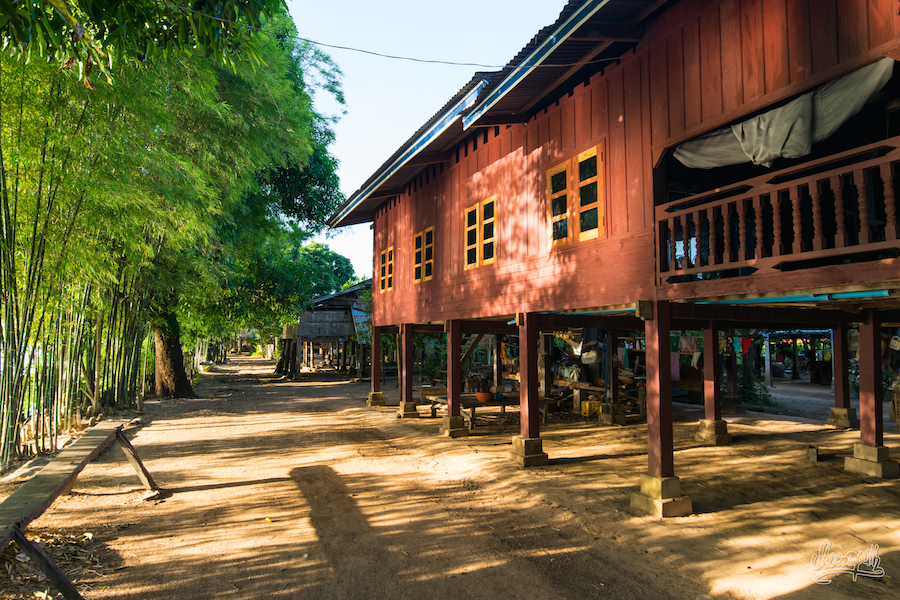
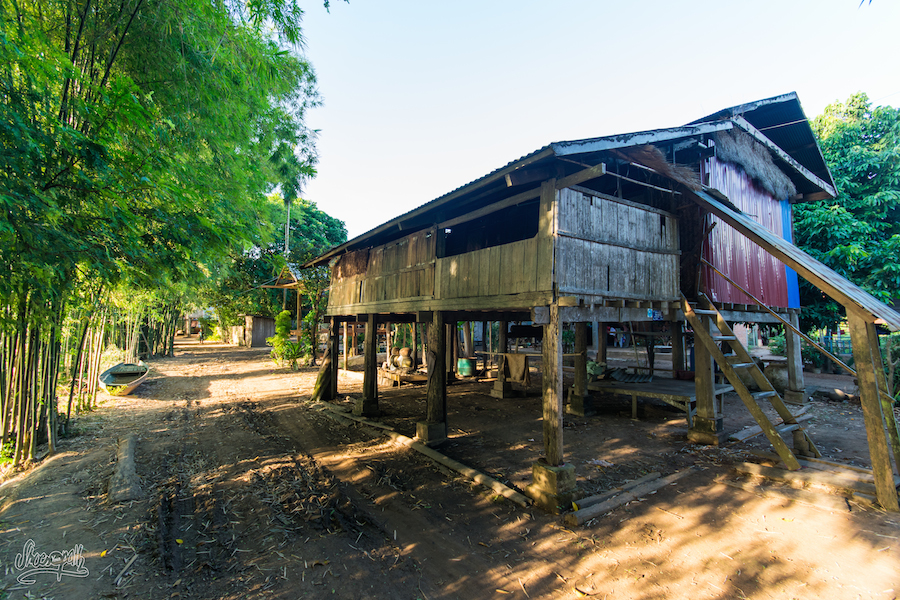
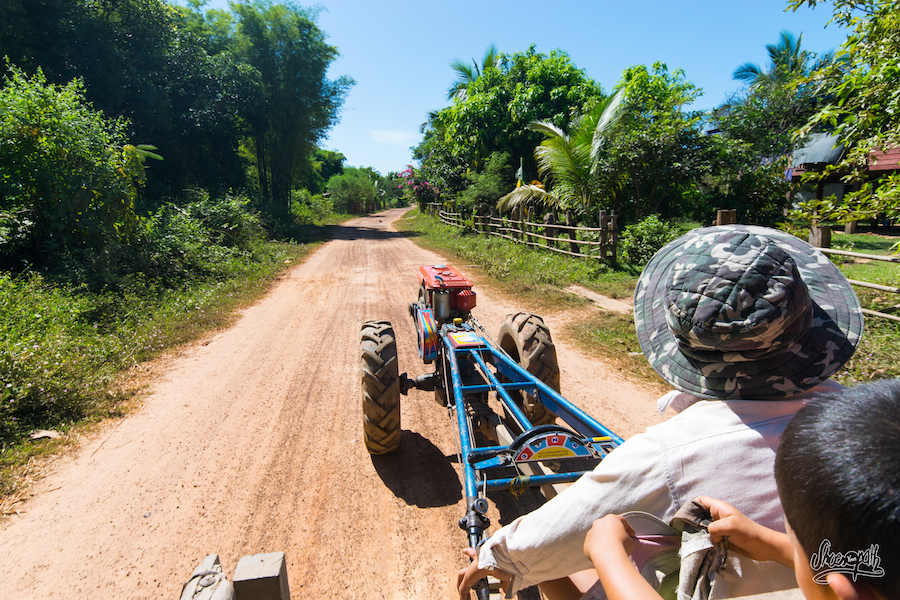
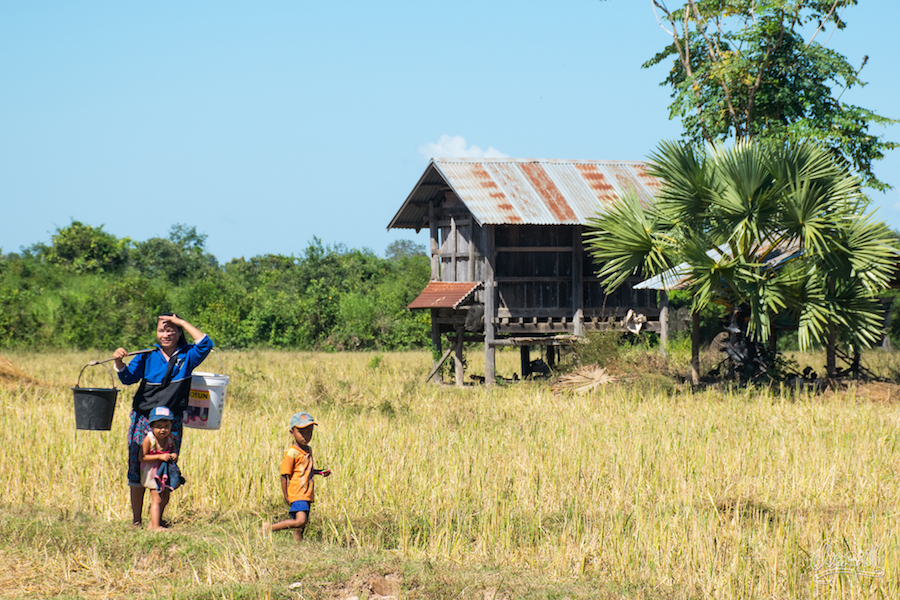
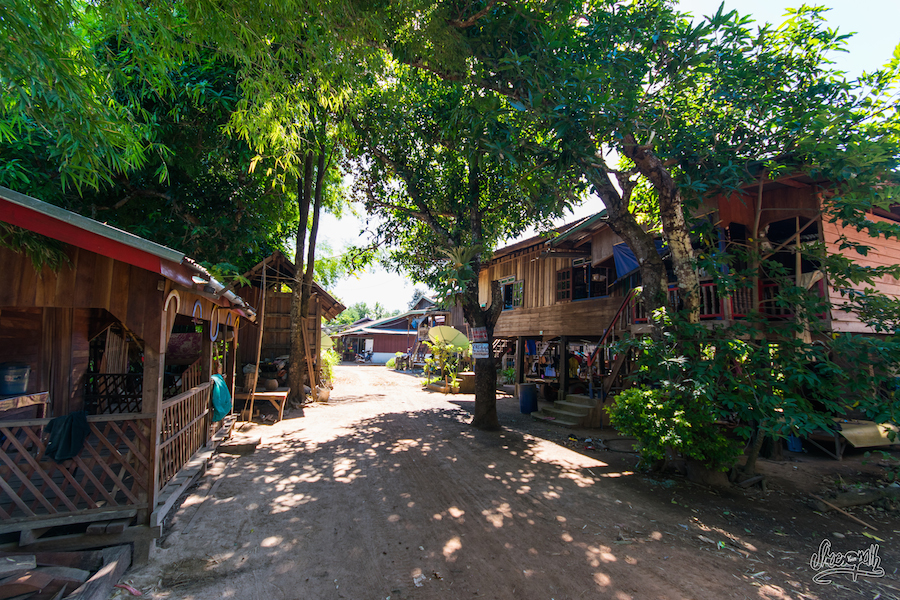
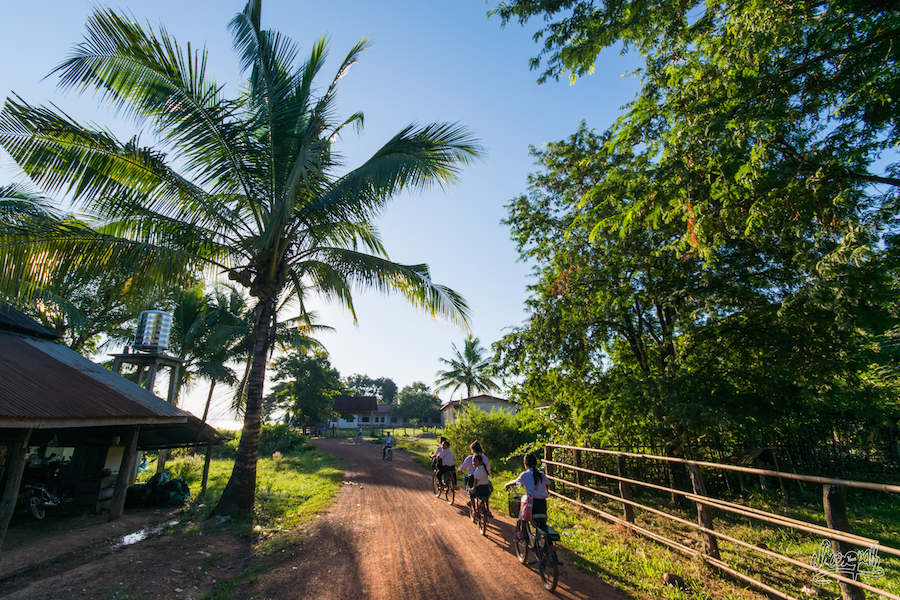
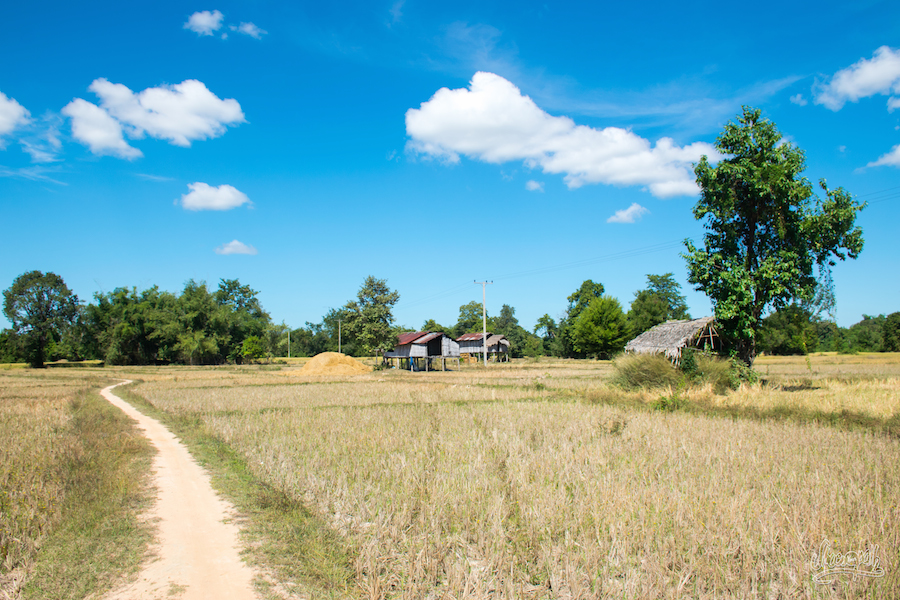
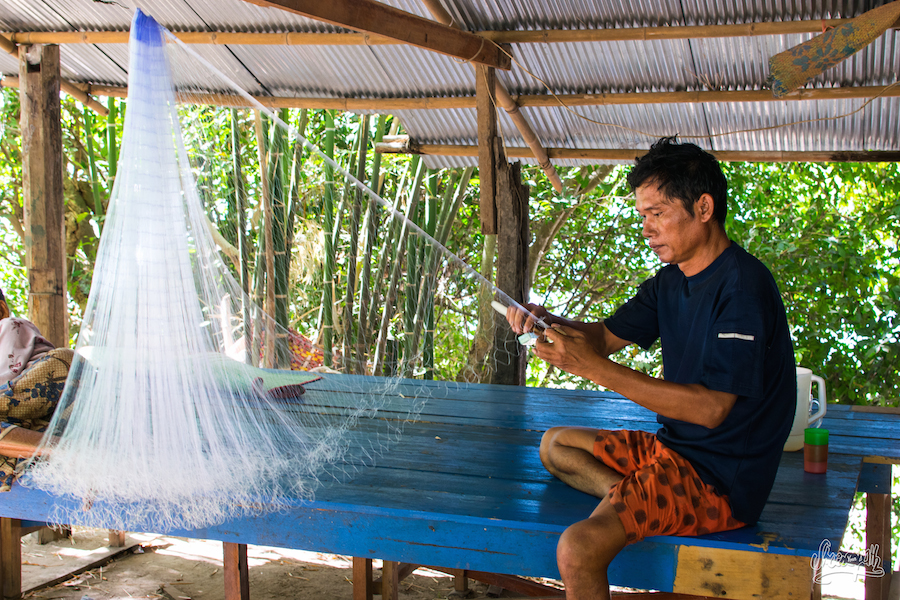
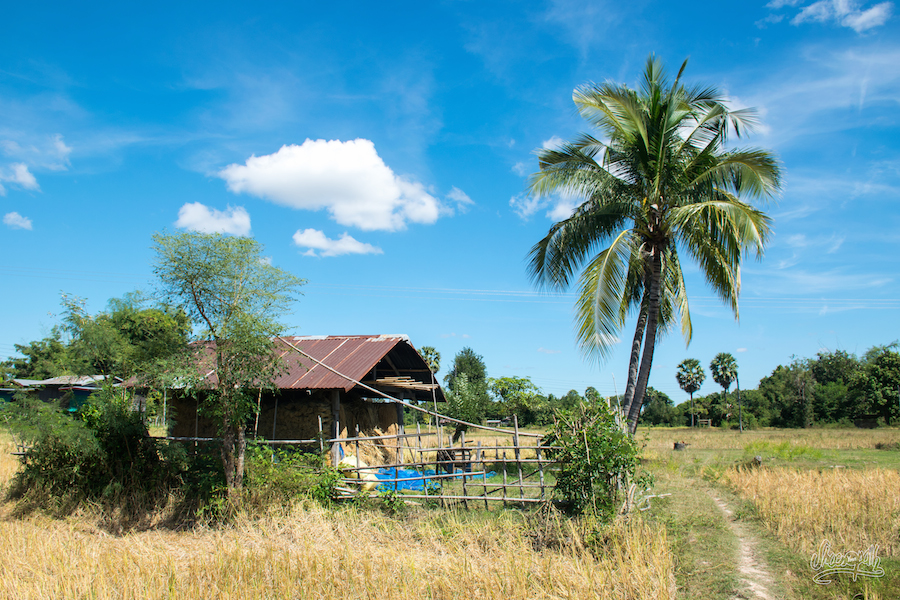
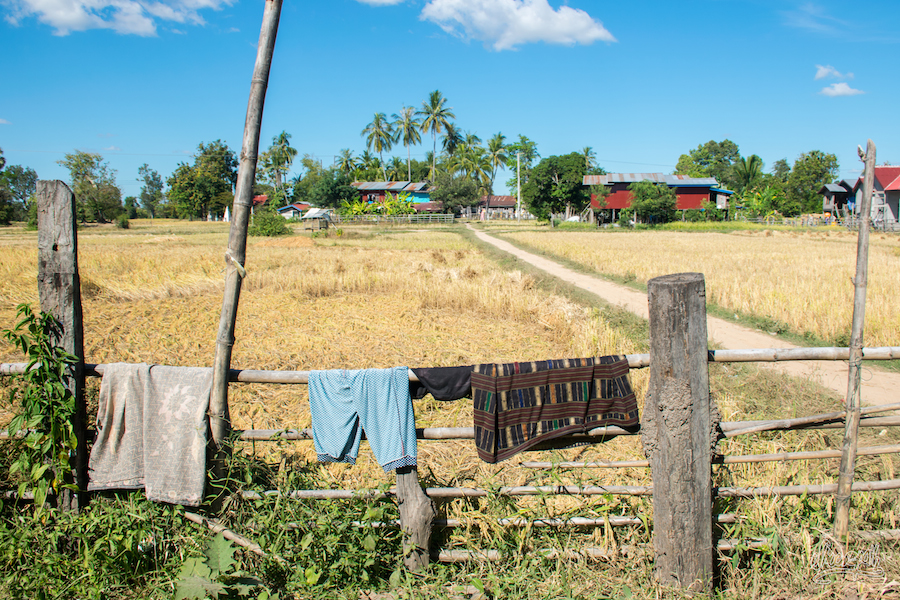
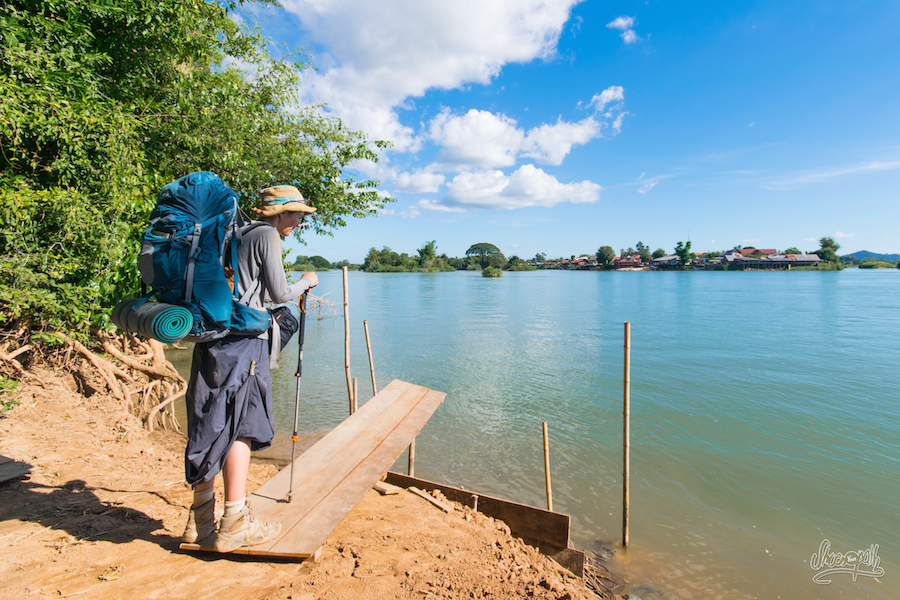

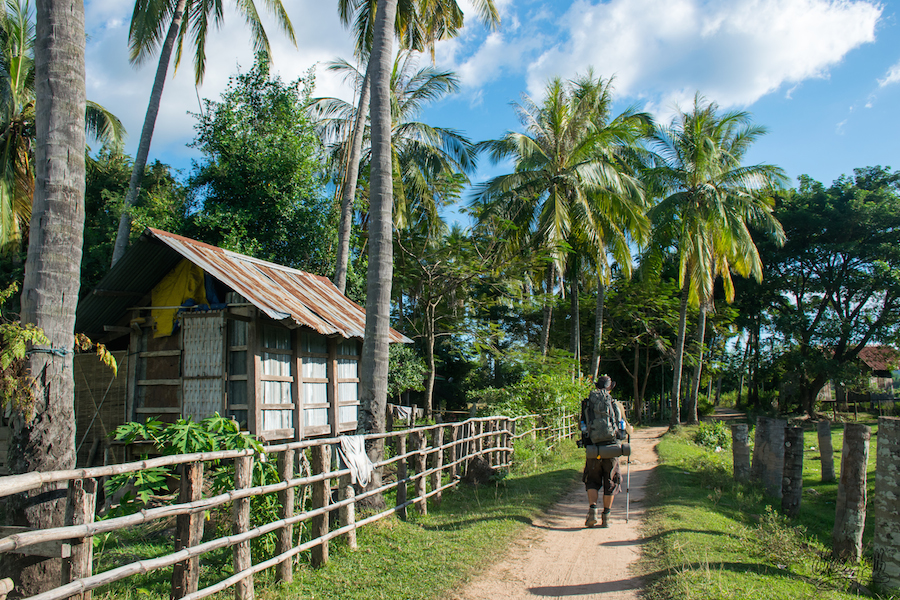
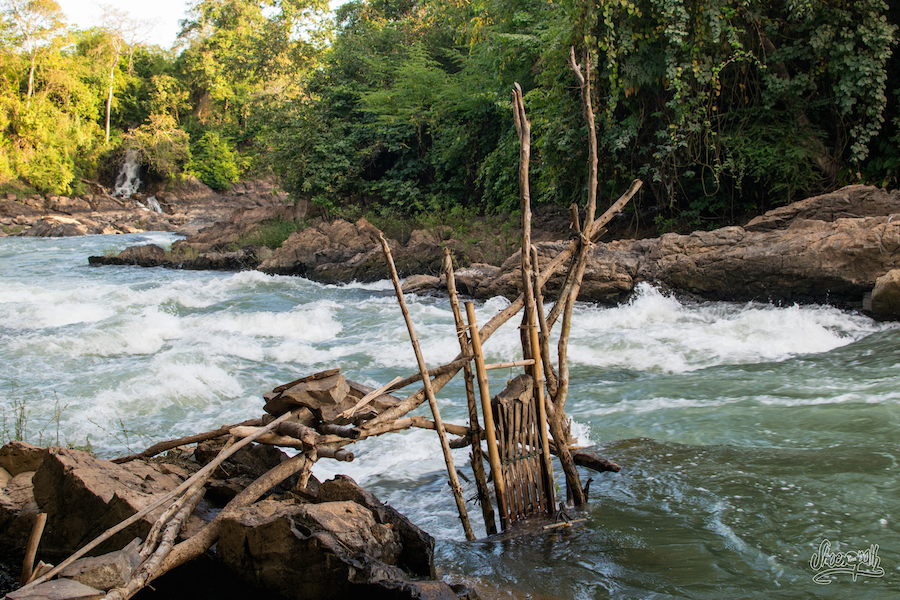
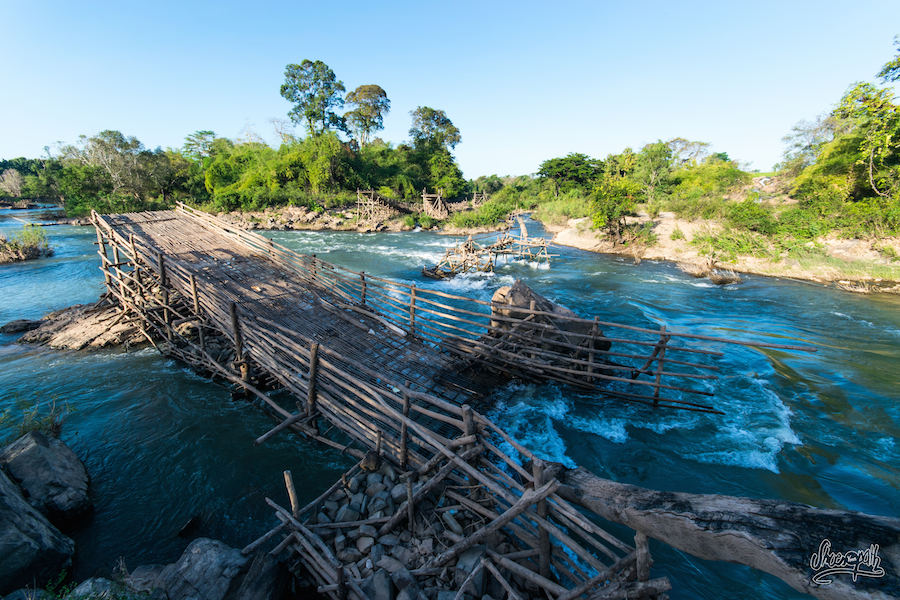
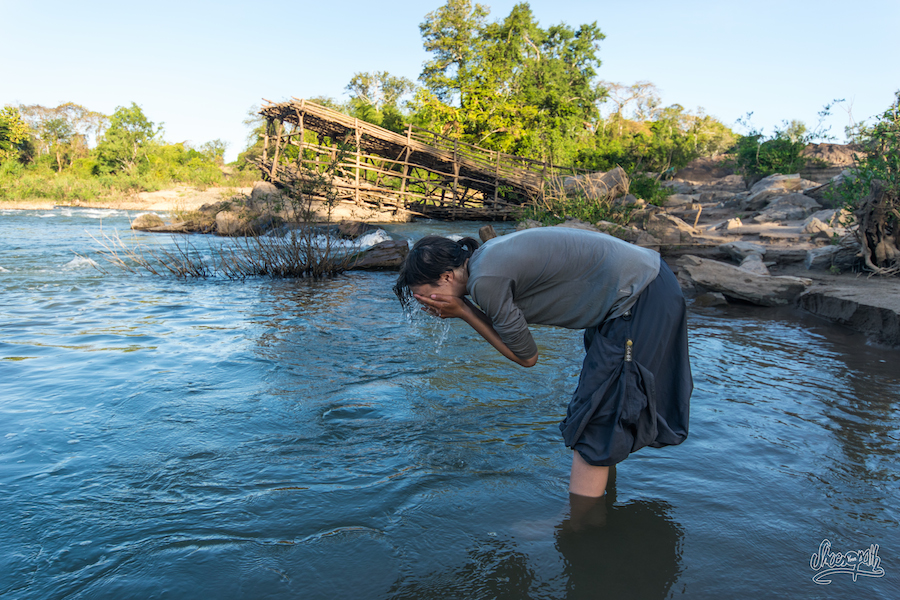
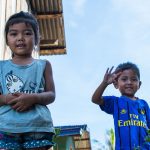
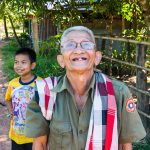
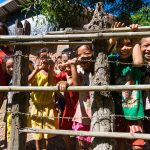
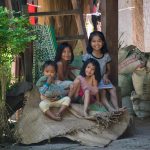
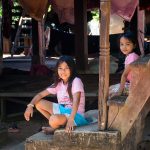
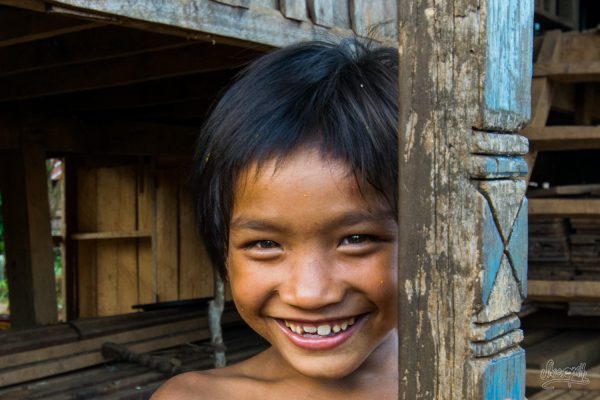
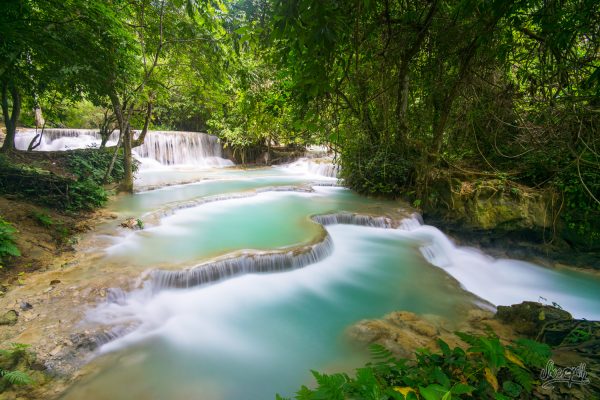
Cet article comporte 0 commentaires